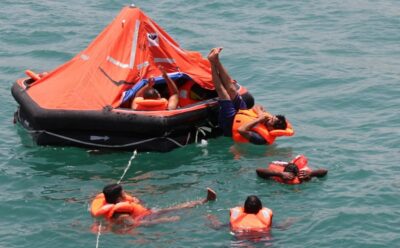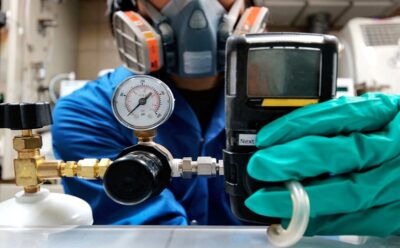
Marine Safety: Understanding the Hazards
Understanding Maritime Safety Hazards What is Welding Safety? Welding is a vital industrial process used in various sectors, from construction
Maritime safety is the protection of the crew and passengers aboard vessels, as well as those living or working near bodies of water, from hazards and the risk of injury or fatality. An example of maritime safety according to the Occupational Safety and Health Administration (OSHA) is the provision of Personal Flotation Devices (PFDs), which aid in the recovery of Persons In Water (PIWs) who are at risk of hypothermia, drowning, and even death.
While often used interchangeably, maritime security and maritime safety are slightly different from each other. Maritime security largely focuses on the protection of vessels and their cargo from external threats such as smuggling and piracy. On the other hand, the goal of maritime safety is to protect people, and in some cases the environment, from naturally occurring or accidental hazards. These hazards, however, can be just as or even more harmful than external threats if they are unreported, ignored, or unaddressed by the vessel’s crew and captain.
Maritime safety is important because neglecting it can lead to unimaginable disasters. Aside from maritime accident prevention, another key reason why maritime safety should be prioritized is that it can actively help lower the risk profiles of ships. Ship risk profiles are used by Paris Memorandum of Understanding (MoU) on Port State Control to determine the intervals between the required periodic inspections. A Low Risk Ship (LRS) can have an inspection interval of 3 years, while a High Risk Ship (HRS) may need to be inspected every 5 months.
The Paris MoU’s New Inspection Regime (NIR), which includes ship risk profiling, applies to its 27 member states. These include, Canada, United Kingdom and most European countries. In the United States, a domestic vessel may fail the mandatory vessel inspection if there is any indication that the navigation of the vessel is unsafe.
Maritime standards are the industry accepted rules that govern maritime safety and security. These rules are enforced by International Maritime Organization (IMO) as well as by other international, regional, or national organizations, associations and agencies.
Below are some of the maritime standards in place today:
SOLAS is an international treaty that, according to the IMO, was created “in response to the Titanic disaster”. Today, over 160 countries adhere to the current version, SOLAS 1974. It covers nearly all aspects of maritime safety, including:
SOLAS 1974 also has chapters dedicated to the carriage of grain, the carriage of dangerous goods, and nuclear ships. On the other hand, the ISO 27991 standard is created to provide guidance on communicating between a Marine Evacuation System (MES) and the platform or survival craft it is attached to, as required by the International Convention for the Safety of Life at Sea (SOLAS) regulation III/6.4.4.
The ISPS Code applies to vessels on international voyages and the port facilities serving them. The main components of the ISPS are the following:
When travelling on international voyages or in the open sea, cargo ships of 300 tons and over, along with all passenger ships carrying more than 12 passengers, must comply with GMDSS requirements. Though GMDSS requirements differ depending on the sea area the vessel is operating in, all vessels that need to comply must have the following:
The International Convention on Standards of Certification and Watchkeeping for Seafarers (otherwise known as STCW, the STCW Code, or the STCW Convention) requires that crew members receive adequate training on topics that are relevant to their duties. Training must be validated in the form of required certificates, endorsements, and/or documented evidence.
While there are specific requirements for each rank, generally all crew members must have a national certificate of competence with them onboard. Another important provision of STCW, particularly the Manila Amendments of 2010, is the use of distance learning and e-learning.
With over 15 years of relentless commitment to excellence, NICO Marine has established itself as a reliable supplier of quality products to the marine and offshore oil & gas industries. Our HSE professionals have years of experience in workplace safety and will be happy to assist you in making the right decision.
Contact us for a free consultation.

Understanding Maritime Safety Hazards What is Welding Safety? Welding is a vital industrial process used in various sectors, from construction

Importance of HSE Management System What is Welding Safety? Welding is a vital industrial process used in various sectors, from

Welding Safety & Welding Hazards What is Welding Safety? Welding is a vital industrial process used in various sectors, from

What is Oil & Gas Safety? Oil & Gas Safety: Top Hazards and Solutions The Oil & Gas industry is

Join our email list to receive product updates, clearance offers, industry insights and more
Join our email list to receive product updates, clearance offers, industry insights and more
504 Dattani Business Park
Vasai West, Palghar
Mumbai 401202
© 2024 NICO Maritime Safety. All Rights Reserved